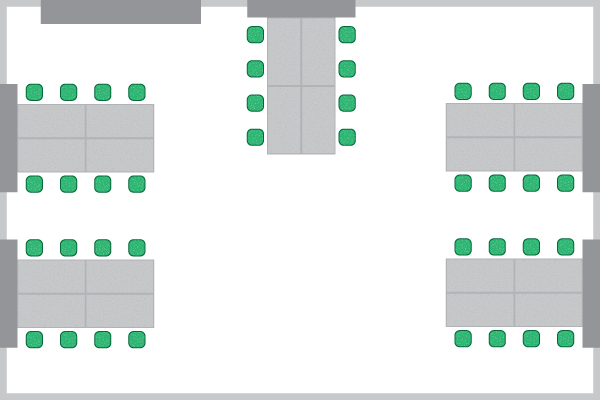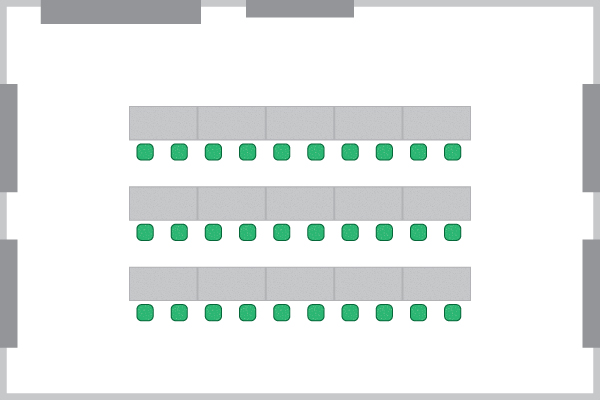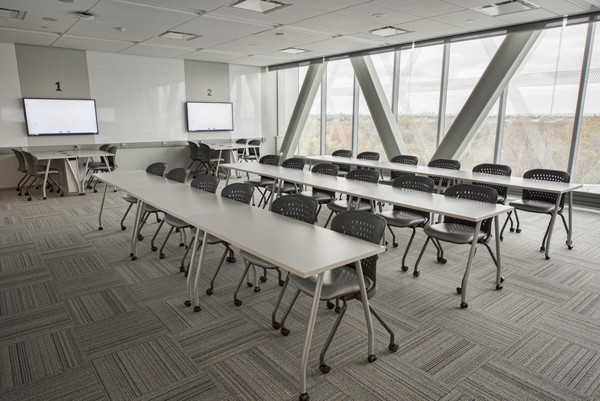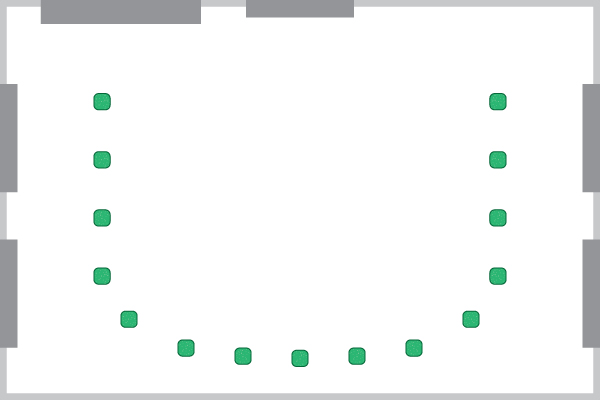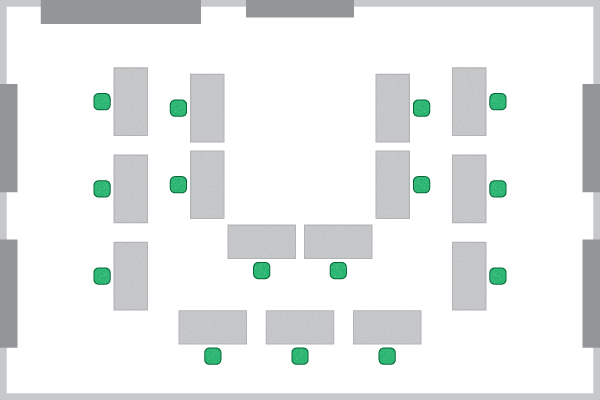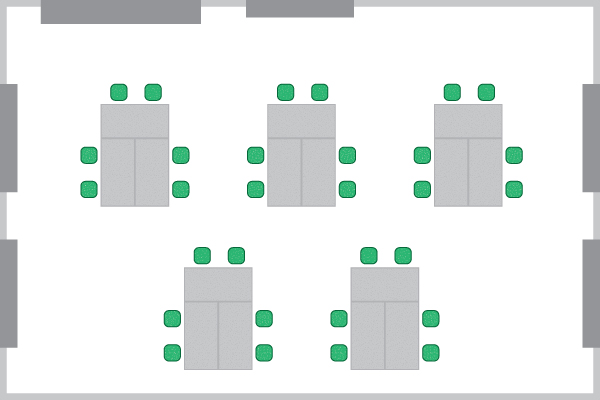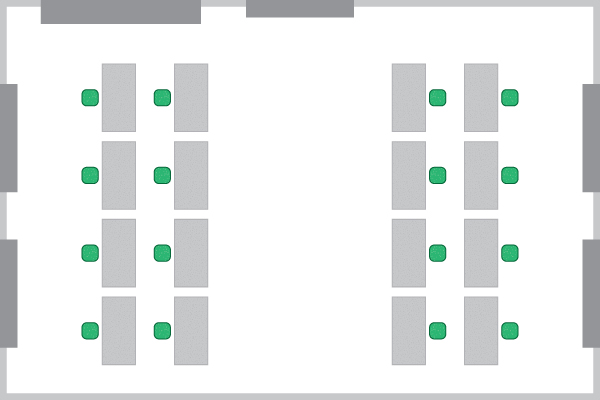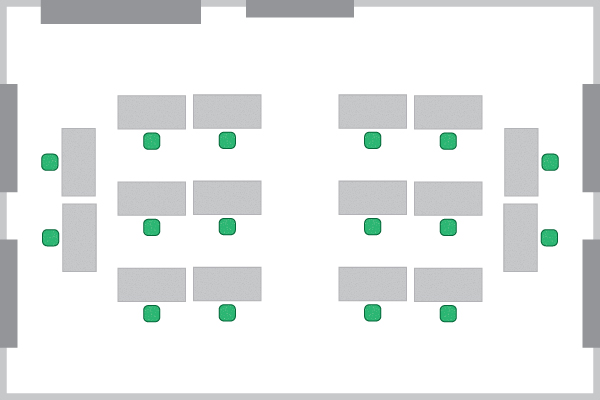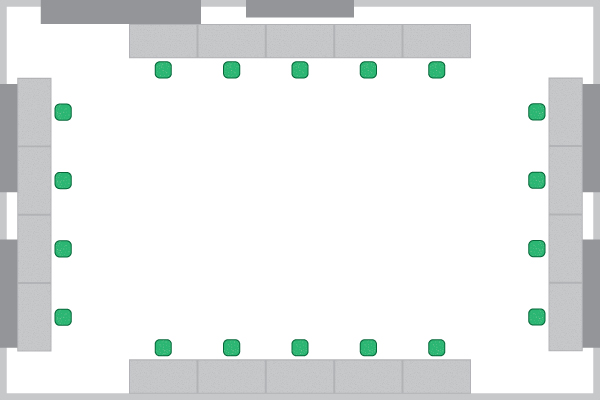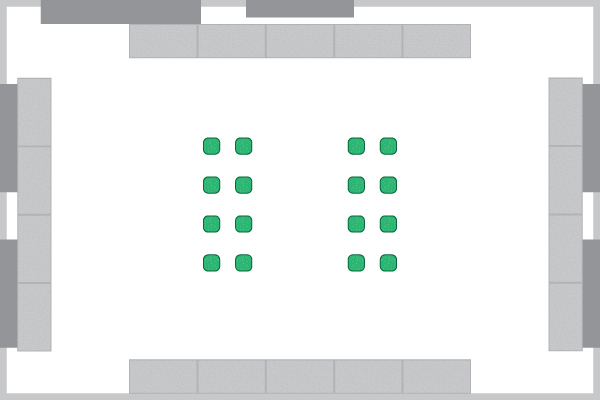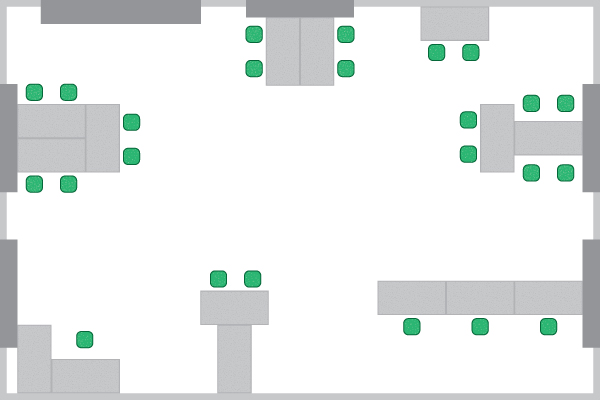Great for:
- Collaborative group work
- Supporting interaction of student technology with wall screens
- Facilitating group formation (especially for shy students)
- Giving instructor easy access to all students
- Peer-to-peer teaching and learning
- Jigsaw activity
Keep in Mind:
- Not as conducive to traditional lecture format (no “main” screen, no central visual focus, increased distractions)
- Have a plan for group formation
- Students may have trouble focusing as there can be more noise and distractions
- May be particularly difficult for students who identify as easily distracted
Great for:
- Increasing productivity by improving focus on individual work and/or instructor
- Traditional pen and paper tests
- Supporting activities that require a central point of focus (lectures, presentations, demonstrations)
- Partner work
Keep in Mind:
- Decreased student-centred discussion and collaborative group work
- Uneven distribution of instructor-student interaction (neglected back row)
Great for:
- Facilitating group conversation and sharing
- Increasing meaningful student interactions as everyone is at the same eye level (including instructor)
- Giving everyone a voice as there is no designated leader
- Individual and large group work (when tables are present)
- Presentations that don’t require an AV central focus
- Poignant end of semester activities
Keep in Mind:
- “Unplugged”
- Circle without desks may make students feel vulnerable and uncomfortable
- Not great if a central visual focus is required
Great for:
- Both teacher- and learner-centred lesson formats; Giving instructor easy access to all students
- Facilitating large group discussions
- Demonstrations, roleplay, simulations (everyone has a good view)
- Debates (students can all see each other)
- Partner work
Keep in Mind:
- “Unplugged”
- Requires more space than many other configurations
- Not so great for small group work
- Could be intimidating for shy students (sense of exposure)
Great for:
- Collaborative group work
- Supporting use of student technology with wall display screens
- Facilitating group formation (especially for shy students)
- Giving instructor easy access to all students
- Peer-to-peer teaching and learning; central focus activities (mini lectures, presentations, etc.)
- Jigsaw activity
Keep in Mind:
- “Unplugged”
- Students may have trouble focusing as there can be more noise and distractions
- May be particularly difficult for students who identify as easily distracted
- Have a plan for group formation
Great for:
- Smaller class sizes
- Teacher-centred lessons (traditional lecture format)
- Discussions and debates
- Demonstrations
- Roleplay
- Simulations
- Partner work
- Games with two teams
- Panel discussions
Keep in Mind:
- “Unplugged”
- Requires space
- Not great for small group work
- Some students may feel vulnerable/exposed
Great for:
- Novelty-changing things up
- Teacher-focused lessons
- Pair-work
- Instructor has easy access to all students
- Games with two teams
Keep in Mind:
- “Unplugged”
- Unequal student access to whiteboards
- Less conducive to small group work
Great for:
- Smaller classes
- Hands-on activities
- Gallery walks
- Roleplay
- Simulations
- Demonstrations
- Games
- Panel discussions
Keep in Mind:
- “Unplugged”
- Have a strategy to maintain students’ attention so that it doesn’t become a free-for-all
- Limits whiteboard access
Great for:
- Opportunity for students to work in small groups or independently depending on their preference
- Instructor has easy access to all students
- Games with two teams
- Learner-centred lessons
- Jigsaw activity
Keep in Mind:
- “Unplugged”
- Not ideal for teacher-focused activities
- Unequal student access to whiteboards
Great for:
- Learner-centred activities
- Empowering students to take responsibility for their learning by identifying how they learn most effectively
- Meeting the needs of learners with differing learning styles (differentiated instruction)
Keep in Mind:
- Students may need help making effective choices – clearly communicate options and expectations
- Requires flexibility in lesson planning
- Have a plan for focusing attention when required
